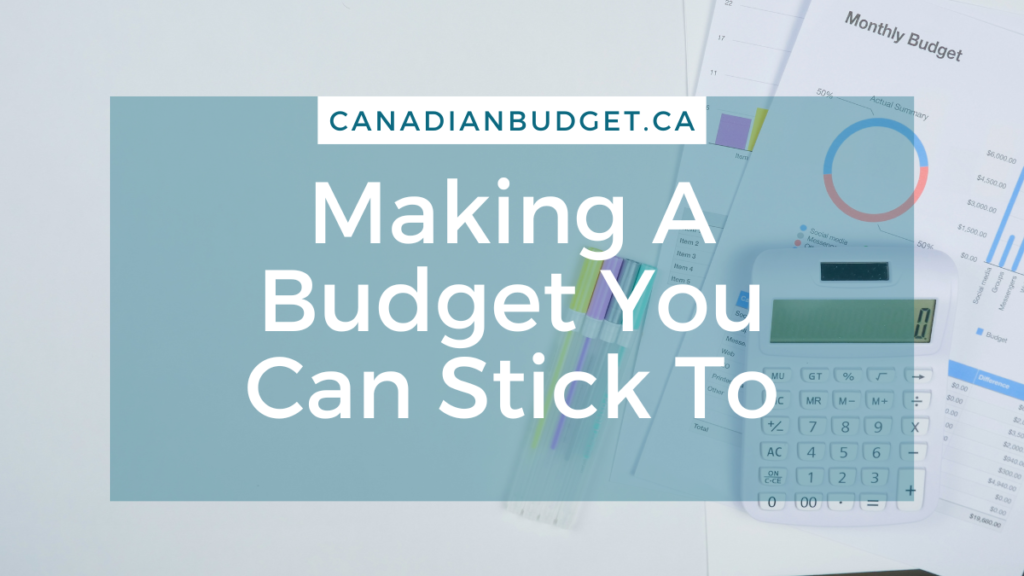
Making a Budget You Can Actually Stick To
Table of Contents
ToggleEight steps to making a budget and financial plan you can actually stick to! You will learn all the steps required to improve your financial situation and create a flexible budget that will help you meet your goals.
This will be one of the longest posts on this site, but I will cover in-depth all the steps you need to take to succeed in getting your financial life in order! Bookmark this page now so you can come back to it!
This is for you if you have ever struggled to make a budget. You can use our paper-based budget planner to follow these steps and create an amazing budget plan for yourself.
Would you prefer to read a shorter post on the basics of creating your first budget? I got you! But if you are ready to change your money habits, this article will give you all the steps you need to get started! Let’s get into it!
Understand How to Make a Zero Based Budget
Zero-based budgeting is our preferred budgeting method. It helps you know exactly where your money is going each month, helping you stay on top of your finances.
Let’s cover some of the steps and information needed when making a budget.
TLDR: Zero-Based Budgeting Formula = Income earned – money allocated in budget = $0.00
The main concept behind this budgeting method is that every dollar of income you earn gets a job. That means you are giving each dollar a duty and ensuring it accomplishes its role each month. In the end, your budget balance will be zero.
Does that mean you are spending everything you earn? No, It means that all money will be allocated to a role. Whether that’s bill payment, savings, investing, debt repayment, or spending. in making a budget, you will tell your money where to go instead of wondering where it all went at the end of the month.
Do I Need Physical Cash In My Wallet To Use This Method?
You do not need to find an ATM or withdraw cash to use this budget style. Using cash envelopes for spending categories can be helpful for some, as they visually see the cash on hand, but it is not a requirement.
In this digital day and age, fewer people are using cash, and more are relying on digital money (debit or credit). The great news is a zero-based budget can be used in whichever style you prefer.
The Cash Envelopes Concept
The cash envelopes concept can be applied when using this method with or without cash. The concept helps you keep an eye on how much you spend as you spend and be aware of how much is left in that spending category for the month.
So, as long as you follow the steps to budget, you don’t need to have cash. You will track your spending and update your categories as you go.
I do not take out cash from an ATM unless I absolutely have to. With the ease of digital finance and having gone through a global pandemic, why bother taking out money to hold physically? I find it harder to put the money to work for another purpose if it is taken out in cash.
Have cash left over from a category for the month and want to pay a bill with it? Then you must find an ATM, put the cash back into your account, and then pay the bill using your digital money. I’d rather leave it all in digital format.
That’s just my preference, but the great thing is you can use whatever method works best for you when making a budget! Regardless of other people’s preferences or opinions. You do you!
Now that you know a bit about the budgeting style, I will discuss it in this article. Let’s move on to Step 2.

Gather Data and Review Your Financial Position
You can’t just start making a budget without doing some groundwork first. Otherwise, it will not work. To back up your zero-based budget, we need actionable intelligence. The good news is you only have to do the first part of this step once when you start budgeting.
A good zero-based budget template can help guide you through the steps of making a budget and taking financial stock of where you are today.
What You Owe
Gather information on any debts you may currently have. That includes mortgages, credit cards, family loans, car loans, student loans, and any other debts you may have.
The next step is to write a list of all accounts owing, recording the lender, amount owing, minimum monthly payments, and interest rates.
What You Own
You will then take inventory of all savings and investment account balances. Write down a list of your various checking and savings accounts, your retirement funds, pension accounts, tax-free savings accounts.
Next, think about high-value items you own as well. Do you own a car – how much is it worth on resale? Do you own a home?
Do you have jewelry, gold, silver, or valuable collectibles? Estimate their value as best as possible and write that down, too.
Calculate Your Net Worth
With this data collected, you will create a Net Worth statement. After you have this as a starting point, you can create a tracking chart for yourself to track your financial progress over time.
I recommend creating a tracking sheet and updating it with your new balances at the end of every month. It will take you 5-10 minutes a month to update.
Tracking this data helps you visualize your progress toward your goals, whether paying off debt or getting to your first $100K invested!
You cannot improve what you don’t track – this is why we are making a budget in the first place!
The Net Worth calculation is simply a record of a moment in time. Don’t stress out too much if it is a negative number.
You are likely here to learn more about improving your financial situation – and you are off to a great start! By making a budget, working on your money regularly and making consistent progress, you will move that number to a positive and keep building it up over time!
Review Your Spending History & Categorize Spending
The normal recommended length of time to review is three months of bank and credit card statements. This can account for any out-of-the-ordinary months that include holidays or special occasions to give you a good picture of your spending habits.
You can print out your statements if you like having things to do by hand on paper. You can also download the statements and organize them in an Excel spreadsheet.
Try to use an online calculator as well to help you make estimates. Once you have this data, it’s time to categorize.
Identify spending Categories and Subcategories
Reviewing your statements will help you understand what you are spending money on. Categorizing your spending will help you when you are making a budget.
Below is a sample of some categories and subcategories. Choose the ones that work for you, and add or remove them as needed to create your own set of categories that reflect your spending.
Home:
- Mortgage/rent
- HOA Fees/ Maintenance Fees
- Property Tax
- Home Owners Insurance/Renters Insurance
Utilities & Telecom:
- Mortgage/rent
- HOA Fees/ Maintenance Fees
- Property Tax
- Home Owners Insurance/Renters Insurance
Shopping/Spending:
- Clothing
- Homegoods
- Miscellaneous
- Guilt Free Spending
- Social
- Entertainment
Food:
- Grocery Shopping
- Food Delivery Services (Door dash, Uber Eats, Skip the Dishes)
- Coffee
- Fast Food & Take out
Transportation:
- Car Loan Payments
- Auto Insurance
- Gas
- Bus/Subway pass or tickets
- Taxi/Uber
Health And Fitness:
- Car Loan Payments
- Auto Insurance
- Gas
- Bus/Subway pass or tickets
- Taxi/Uber
- Sinking funds for your various savings goals
- Extra debt repayments
Canadians:
- TFSA – Tax-Free Savings Account
- RRSP – Registered Retirement Savings Plan
- FHSA – First Home Savings Account
- RESP – Registered Education Savings Plan
- RDSP – Registered Disability Savings Plan
- Taxable Brokerage Accounts
Americans:
- 401k
- Roth IRA
- Health Savings Account
- 529 Education Savings Plan
- Taxable Brokerage Accounts
- Mortgage/rent
- HOA Fees/ Maintenance Fees
- Property Tax
- Home Owners Insurance/Renters Insurance
- Electricity
- Gas
- Water
- Cable
- Internet
- Phone
- Streaming Services
- Clothing
- Pharmacy
- Miscellaneous
- Grocery Shopping
- Food Delivery Services (Door dash, Uber Eats)
- Coffee
- Fast Food
- Car Loan Payments
- Auto Insurance
- Gas
- Bus/Subway pass or tickets
- Taxi/Uber
- Gym Membership
- Massage
- Therapy
- Other Health Services
- Sinking funds for your various savings goals
- Extra debt repayments
Canadians
- Pension
- TFSA – Tax Free Savings Account
- RRSP – Registered Retirement Savings Plan
- RESP – Registered Education Savings Plan
- RDSP – Registered Disability Savings Plan
- Taxable Brokerage Accounts
Americans
- 401k
- Roth IRA
- Health Savings Plan
- 529 College Savings Plan
- Taxable Brokerage Accounts
- Birthday
- Christmas
- Weddings
- Anniversary
- Baby Showers
- Tithing
- Donations to a charity
- Donations to political parties

OK, I know what you are thinking… All this, and we aren’t even making a budget yet?
Come on!
But trust me, laying this groundwork will really put you in a good place to improve your financial position!
Estimate Your Average Spending by Category
Now you have your categories set, You are going to go through each of the last 3 months and add up each of the transactions based on the categories you just set and create your own mini chart to determine your average monthly spending.
Let’s imagine the months you are reviewing are January, February, and March. Create a table with your categories running down one column vertically and each month across the top row. add up the categories one month at a time so you end up with 3 columns of spending category amounts, one for each month. Completing this chart will give you a good picture of your average spending, and you will use this data when you create your budget.
You can also use handy online calculators like this to make estimates. But working through your actual numbers is the better way
Set Your Financial Goals
So what’s the point of all this anyway?
Why do we even want to go through all this work? It is so that eventually you can reach the financial goals you have for yourself.
Want to buy a house?
Want to retire early?
Want to get out of debt?
Want to be financially ready to start a family?
Want to be able to support aging parents?
Want to have money to travel?
All of these goals can be accomplished when we get organized with our money, have a good budget, and drill down on what our goals are and how much they will cost us!
You are going to like this part! I’ve made this really easy. Grab our Financial Goal Planner for FREE to help you through this step. It’s a PDF document you can print out and work on to help set your goals.
Come back after downloading the planner to continue the process below.
Are you still with me?
Amazing! So glad you made it this far! Are you ready to continue on the steps to create your budget and help you reach those financial goals you just set for yourself?
Here it is, the part you’ve been waiting for:
Making A Budget
Making a budget or a spending plan will be really simple now that you have done all the leg work to categorize your spending.
Basic Budget Formula
Basic calculations comprise a budget; take your income and subtract expenses, spending & savings. With the zero-based budget method we learned earlier, the result of that equation should be zero.
We recommend that you prioritize your savings before spending so you can practice paying yourself first.
By Hand vs Digital Budgeting
Once again, you can choose whether you want to work on your budget by hand or complete it digitally.
Here is where I can make the process much easier for you. Check out the Canadian Budget Planner, which includes the Budget Template, Spending Categories & Tracker and more!
If you prefer to work digitally, you can find a spreadsheet template which includes a zero-based budget template, net worth tracker, and bonus debt payoff spreadsheets.
Making a Budget Monthly vs By Paycheck
Another personal choice is to decide between budgeting monthly or by paycheck. How often you get paid may be a deciding factor. I would say most people get paid bi-weekly, but you may have an inconsistent income or get paid monthly like me.
You can try both ways, decide what you like, or even do both. Create one overall monthly budget, then plan each pay cycle with its own budget. You do you!
Create Your Spending Plan.
YES! Let’s get to it.
This is a first draft attempt at making a budget- so don’t be too critical; start writing and then revise.
If you have one of my above budgeting bundles, the budget skeleton is already there for you. If you want to make your own, here is the general format you want to follow.
At the top of the page, record your expected income. Under the income section, then comes your expenses.
We are going to practice paying ourselves first. That means before you go spending anything, you have already set aside money for your savings and investments.
Write down your contributions to your savings goals (which you determined the monthly costs for in the Free Financial Goal Planner you filled out).
Then, list out all your expected bills for the month; next to the amount, add the date the bill is due. Include here any minimum debt payments required each month.
For any bills that are variable costs (a different amount each month), use your estimates from your 3-month spending review (the one we completed earlier) to put down an average cost.
Below that go the spending categories you already determined above and their estimated average spend.
Now, to calculate, subtract every item from your total income.
Congratulations, you completed the first draft of your budget. I hope this helped you realize that making a budget isn’t all that difficult.
Are you spending less than you make?
If the above calculation of all of your expenses and planned spending subtracted from your expected income resulted in a negative number, you need to make some adjustments.
Spending less than you make is the key habit to help you get out of debt and have enough money not only to spend on the things that are important to you but also to save for the future and invest!
Are you a little over? or way over?
Suppose you are just a little over the budget (spending more than you make). Small tweaks can help you refocus your spending habits on what brings you joy and cut back on the mindless spending that adds no value to you.
If you are way over budget, evaluate what has caused this. Go section by section to review each of the following:
- Financial goals and monthly contributions toward them
- Monthly bills and services in use
- Debt repayment amounts (Learn how to get debt-free faster)
- Spending categories
Where do you see room for change? Can you negotiate a monthly bill or lower an interest rate? Can you cut out or cut back on a service that is not essential? Can you reduce your monthly spending in one or two categories or eliminate a category altogether?
Or alternatively – what are the ways you could make a bit more money each month? This could be as small as selling something on Facebook Marketplace or as big as changing jobs to a higher-paying one.
Whatever it is – now that you have all this data and knowledge about your spending and financial position – it will be easier for you to make this change. Making a budget now should be a whole lot easier!
Get your numbers right.
You want to tweak the numbers in the categories you control in the budget until your balance equals zero – you have given every dollar a job.
As I mentioned before – this doesn’t mean you have to spend spend spend until there is nothing left.
A great tool in the budget is the Buffer or miscellaneous category. Budgets are built by working on estimations, so there is always a chance we over or under-estimate our budget.
When you overestimate, a buffer is there to protect you. For example, this could mean adding a $100 Buffer line to your budget.
If you are well under your budget, you can divert more of your income to your financial goals through sinking funds or investments.
Rejig the budget category amounts until the balance is zero, and you are ready to go!
Track Your Spending
Now that you have your budget and best estimates of how much you think you will spend… surprise, you need to track what you spend.
Yes, every dollar.
Yes, on your debit, credit, and cash use.
And yes – at least for a few months.
It doesn’t have to be a forever thing – but it is a fantastic exercise to really understand your money habits and make sure you are on track toward the goals you set for yourself.
Why it makes sense to start on paper
There are all sorts of apps for budgeting, and I’ve tried them all. It makes sense to begin your budget on paper, as when we write something out by hand, something in our brain makes it stickier. We pay more attention and can remember more when we have taken the time to write it out by hand.
So yes, you can download your digital transaction records from your bank or credit card. But I strongly urge you to take just a few minutes a day at the end of the day – and write down anything you spent that day and assign it to one of your categories.
Some budgeting tools come with spending tracker sheets – you can also use plain paper or your favourite notebook.
Close Out Your Budget and Calculate the Category Spends
OK! You have diligently tracked all your spending and reached the end of your first budgeting month.
To close out your budget, you will compare your budget with what you spent. Add up all the spending by category for the month and compare your bank statements to your budget.
The Canadian Budget Planner’s budget sheet includes a column for you to add up what was spent and compare it to what was budgeted.
If you are budgeting by month rather than by pay period (and you get paid bi-weekly), I actually recommend you do this at the end of pay period 1 and pay period 2 as well so you can see how you are doing. It will show you how much of your monthly budget is still left to use – and you can adjust the next 2 weeks accordingly.
Review and Revise the Budget For Next Month.
Each month, you should reflect on what happened in the previous month compared with how you planned out your spending.
A budget should never be static. It should be adjustable and change based on your experiences and as you improve your relationship with your money.
After you review your performance, you are ready to start making a budget for the next period and start again.
Suppose you went over budget; it’s not a failure; view it as a learning opportunity. Don’t let any small hiccups along the way derail your process. Making a budget is a trial-and-error process. It should be iterative and change from time to time.
You are practicing to improve, not to be perfect. You want to be better this month than last, but holding yourself to perfection standards will not help in the journey you are on. Give yourself some grace, and know that each time you try, you are getting a little bit better!
If this post has been helpful, please share it with a friend who would benefit from reading it!
Remember to download your Free Financial Goal Planner to help you get started! I know this is a lot, but don’t get discouraged. You got this!
More on the blog...
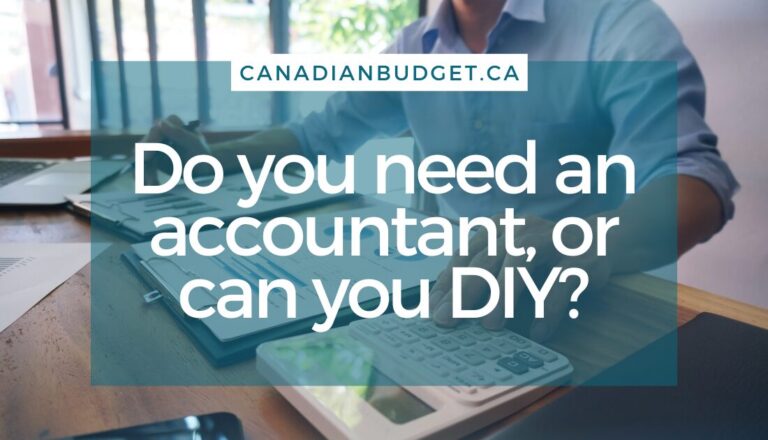
Do You Need an Accountant…
Guest Post by Karan Sachdeva of MultiTaxServices Doing taxes in Canada Money management often feels like one of those “I’ll...
Read More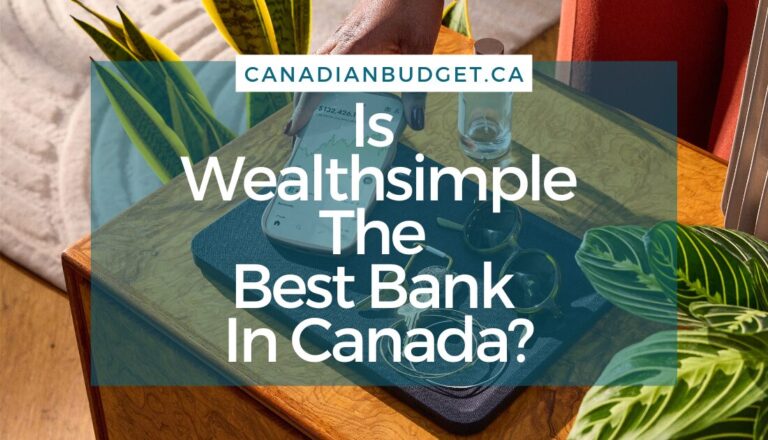
Why Wealthsimple Could Be the…
Wealthsimple Banking Review 2025: Best No-Fee Bank in Canada
Read More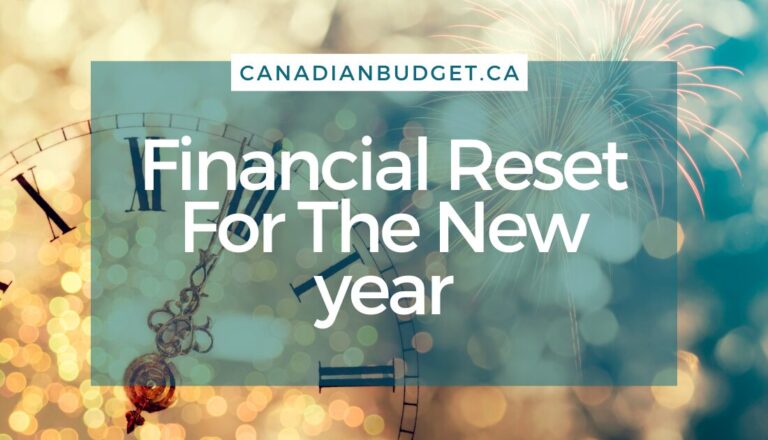
Financial Reset For The New…
How to Do a Financial Reset for the New YearAs the new year begins, it's the perfect time to take...
Read More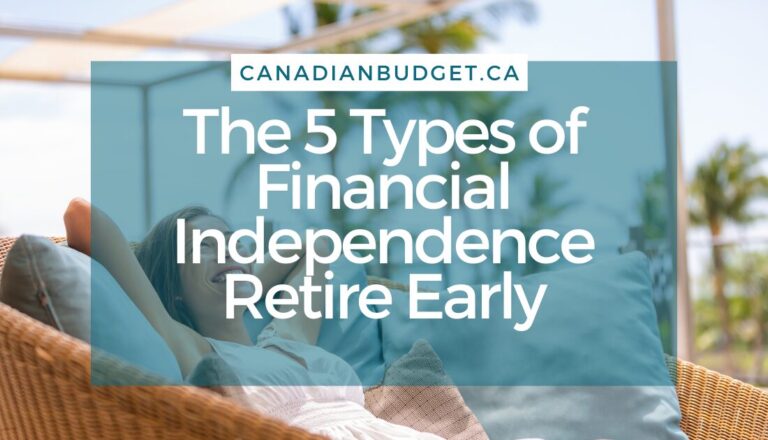
The 5 Types of Financial…
Starting your journey towards Financial Independence Retire Early (FI/RE) in Canada opens up possibilities for those eager to take control...
Read More
In a Public Sector role?…
Public sector roles, including those in schools and hospitals, make up approximately 21% of employment in Canada. That includes teachers...
Read More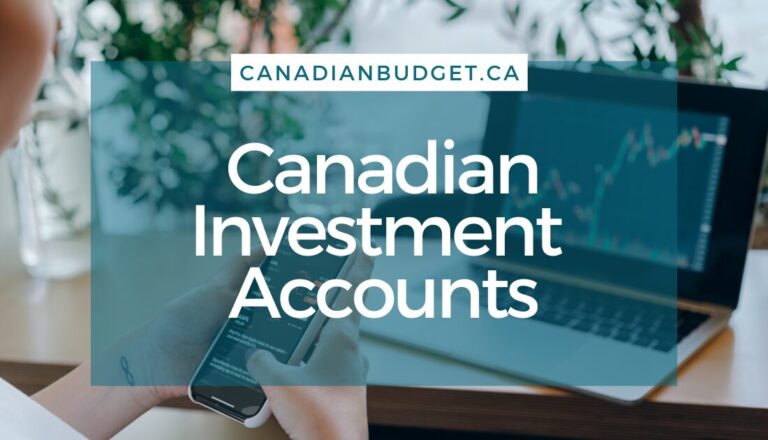
8 Canadian Investment Accounts To…
If you are new to investing, you might be wondering what the Canadian investment accounts are available, and which is...
Read More
What Are Canadian Real Estate…
Canadian Real Estate Investment Trusts: What They Are and Should You Invest? Canadians have heard owning property was the path...
Read More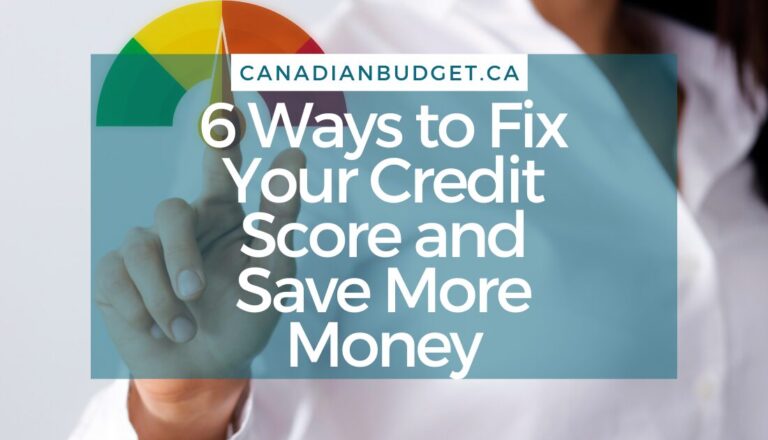
6 Ways Fixing Credit Scores…
Struggling with debt can significantly impact your financial well-being, especially if your credit score suffers. Fixing credit scores is important...
Read More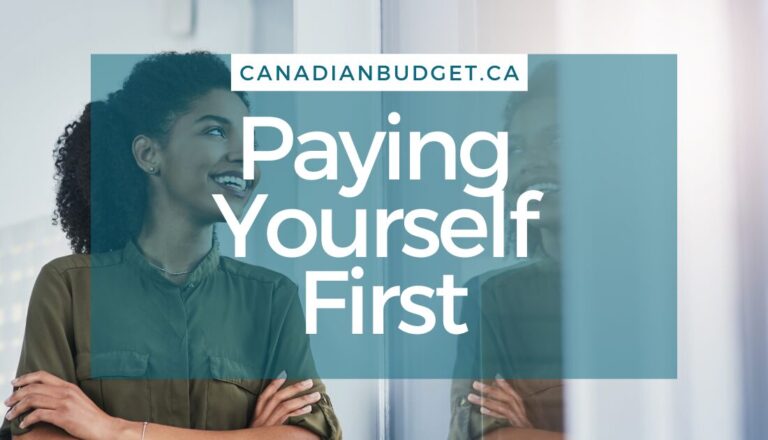
The Paying Yourself First Method
Taking control of your financial future starts with a simple yet powerful concept: paying yourself first. Shifting your money mindset...
Read More
How to Calculate Retirement Savings…
When is a good time to calculate retirement savings needs? When retirement may be decades away it’s hard to think...
Read MoreAbout The Author
Jessica Morgan
Jessica Morgan is the founder and CEO of Canadianbudget.ca. She is passionate about personal finance and helping Canadians improve their financial literacy by providing more Canadian focused financial content. A millennial mom of one, she has a burning obsession with all things personal finance.
Jessica has a BA in East Asian Studies from York University and a Masters in Business Administration from Toronto Metropolitan University. She is a career public sector employee with a Hybrid Pension, and an advocate for Canadian women to improve their personal finance knowledge.
Jessica Morgan
Jessica Morgan is the founder and CEO of Canadianbudget.ca. She is passionate about personal finance and helping Canadians improve their financial literacy by providing more Canadian focused financial content. A millennial mom of one, she has a burning obsession with all things personal finance.
Jessica has a BA in East Asian Studies from York University and a Masters in Business Administration from Toronto Metropolitan University. She is a career public sector employee with a Hybrid Pension, and an advocate for Canadian women to improve their personal finance knowledge.
